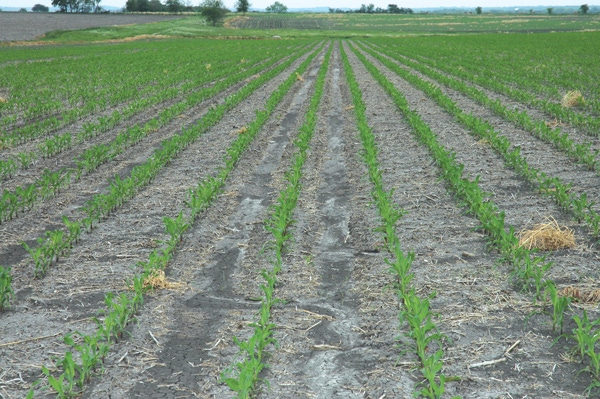June 1, 2011

In its first report on the condition of the 2011 corn crop as planting nears completion across the Corn Belt, the U.S. Department of Agriculture rated the crop 94 percent fair to excellent, compared to the last year's rating of 96 percent. Across the top 18 corn-producing states, the crop was 86 percent planted as of Sunday, nine points below average. Two thirds of the corn crop has emerged, compared to an average of 78 percent.
"The holiday weekend has brought warmer weather to a lot of areas, and we expect this to help our crop grow quickly," said NCGA First Vice President Garry Niemeyer, a grower in Illinois. "We know that the day the seed goes in the ground is not always a good determiner of how the crop will turn out, and that weather through the growing season plays a larger role. We're hopeful our crop will be a record-setting bin-buster, as expected, despite the planting challenges many of us faced."
Planting is virtually complete (94 percent or more) in North Carolina, Iowa, Texas, Kansas, Nebraska, Colorado, Illinois and Missouri. In North Dakota, where wet weather caused delays and flooding is now taking place in some areas, corn growers made significant progress last week, planting a quarter of their acres. Seventy-four percent of the corn acres are now planted in North Dakota, compared to 49 percent last week.
Because some parts of the Corn Belt have suffered from localized setbacks, such as flooding and recurring rain, growers are looking at insurance options when planting is prevented by causes beyond their control. The Internet resources cited below provide a wealth of information that could help them make a well-informed decision.
Click here for the USDA's Risk Management Agency Web page that provides the latest news and bulletins regarding prevented planting.
Gary Schnitkey of the University of Illinois's Department of Agricultural and Consumer Economics provides a look at the economics of prevented planting.
Art Barnaby, a professor at the Department of Agricultural Economics at Kansas State University, also reviews the complicated decision to file for prevented planting.
Click here for the USDA's complete May 31 Crop Progress Report.
You May Also Like




